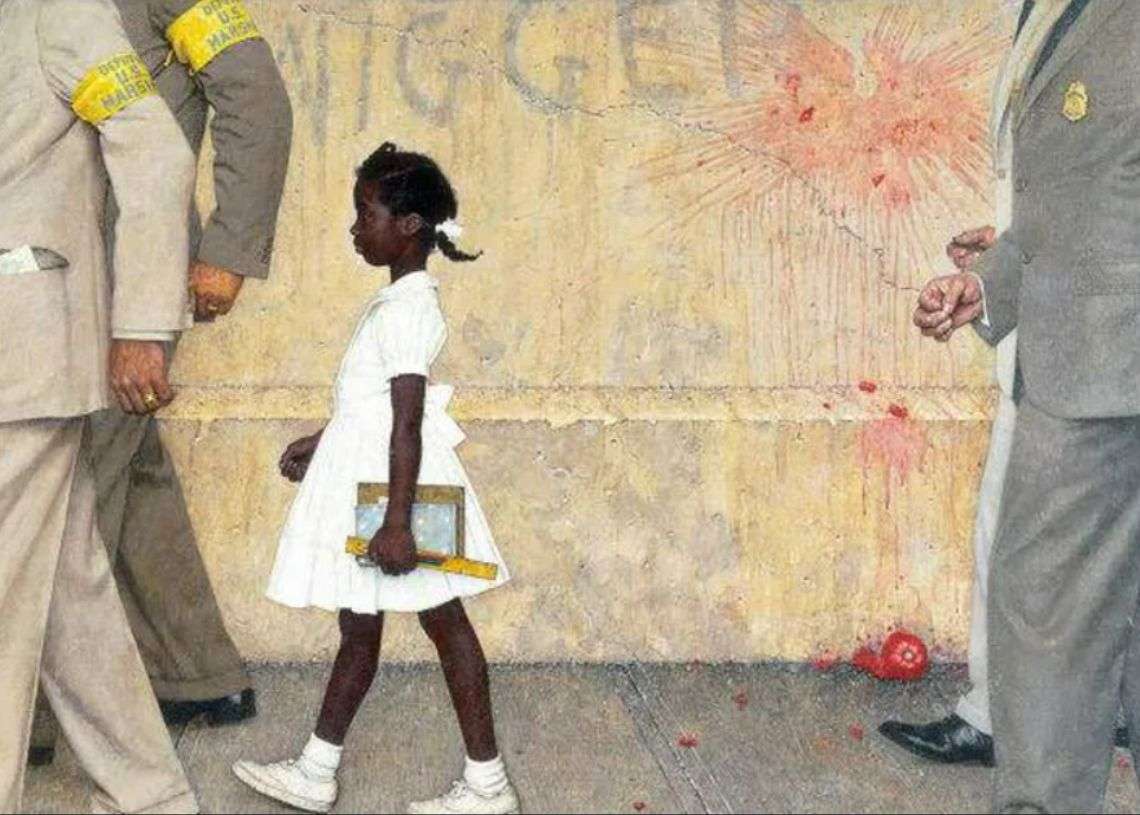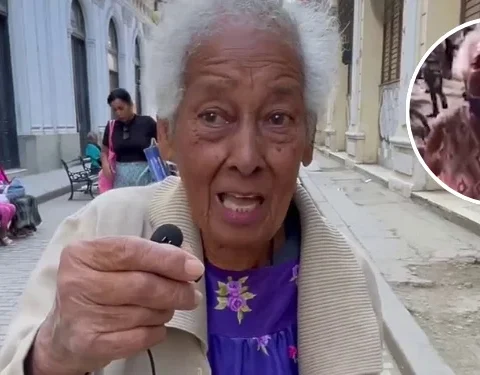Ruby Nell Bridges, at just 6 years old, became the first African-American girl to enter a white elementary school in the southern United States. The Rockwell painting (which accompanies this text) shows her being escorted by law enforcement officers to protect her against the mob of racist protesters who wanted to prevent her from attending a school with other white children.
Born September 8, 1954, in Tylertown, Mississippi, she spent her early years on her parents’ farm. She was 4 years old when her parents moved to New Orleans in search of a better life and a decent education for her daughter.
What they found in New Orleans, particularly in the school system, was no better in Louisiana than in Mississippi. Louisiana schools were required not to segregate by race after the United States Supreme Court decision in Brown v. Board of Education in 1954.
The Court ruled that US state laws establishing racial segregation in public schools were unconstitutional, even if the segregated schools were the same. The opinion stated that the notion of “separate but equal” it was unconstitutional for American public schools and educational facilities.
Bridges was in kindergarten when she was chosen to take the placement test that would determine if she was one of many black students qualified to attend an all-white school. The test was deliberately complicated to prevent black students from passing, giving the city’s schools more time to remain segregated. Like Linda Brown, Bridges lived within walking distance of an all-white school, but she had to attend an all-black school miles from her home.
Bridges’s parents did not want her to take the test, fearing the problems that would follow if she passed. They finally relented, and her daughter was one of six black students who passed the exam. She would be the only black student at the William Frantz School. Even so, there were still some hurdles to overcome, as Louisiana state legislators tried by all means and trickery to avoid complying with the law ending segregated schools.
On the morning of November 14, 1960, Bridges and her mother were driven to their new school. Then it was decided that Ruby would enter the school with two agents in front and two behind, as Rockwell’s work immortalizes.

A crowd of white protesters waited for the girl outside the school, shouting insults and throwing objects. Instead of being taken directly to the classroom, she was escorted to the principal’s office, where she remained for the rest of the day. The situation was the same on her second day of school, but a teacher, Barbara Henry, volunteered to have her as the only student in the classroom. White parents refused to send their children to school.
The environment at school was exhausting for the little girl, but Bridges, with the help of her teacher and her parents, endured the bullying, though after a while, the stress on her little body became more evident by the day. She soon started having nightmares and for a while stopped eating at school until Henry convinced her to eat with her.
Much of her confusion was documented by Dr. Robert Coles, a noted psychologist who, in addition to offering his advice, later wrote a series of articles and a book about Bridges’ ordeal.

After a year or so, some of the white children began to slowly return to school, and things changed drastically. There were no more FBI agents to escort Ruby to class, and her classmates gradually began to accept the fact that she was here to stay.
Bridges finished elementary school in Frantz and later graduated from an integrated high school in the city. According to the website for the Ruby Bridges Foundation, which she founded in 1999, she worked for a credit card company after studying tourism at a Kansas City business school.
In 1984 she married Malcolm Hall and later became the mother of four children; all attended Frantz Elementary School.
*This text was originally published on Afro-females. It is published with the express permission of its publishers.
















